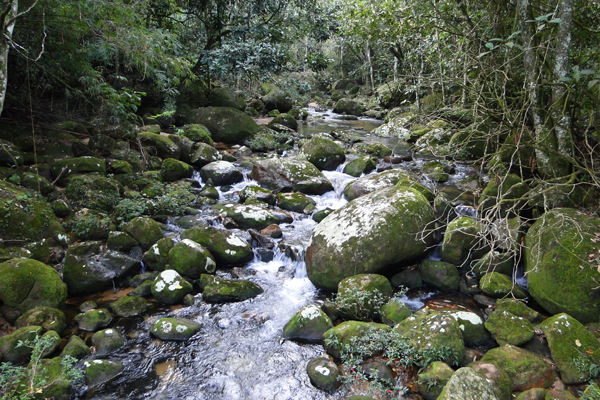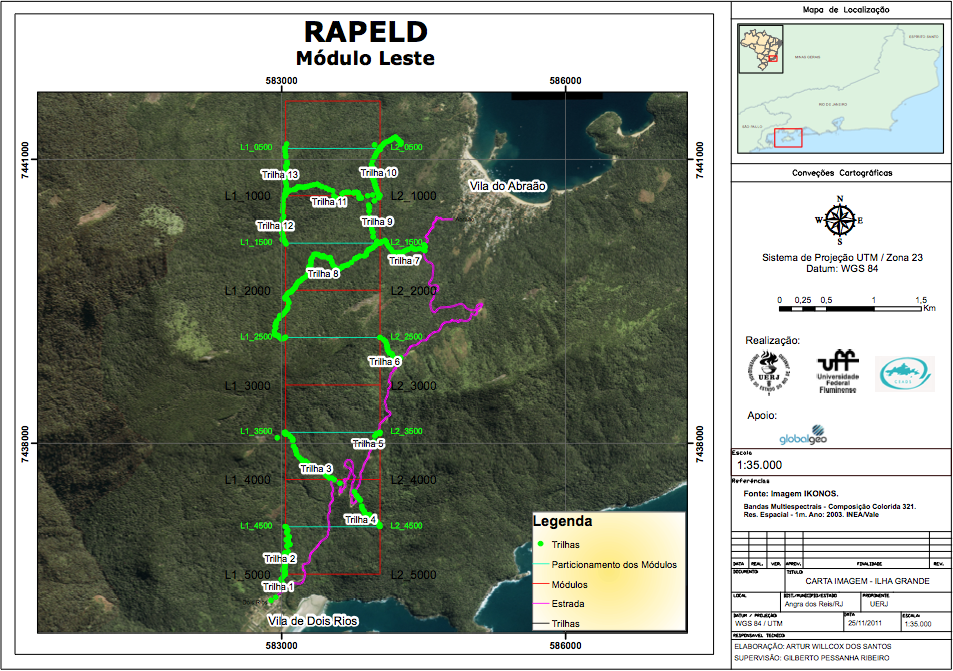Languages
Ilha Grande
The Great Island is a fragment of the coastal massif of approximately 190 km2 and a rather rugged relief. Ilha Grande is located in the municipality of Angra dos Reis, in the tourist region of Costa Verde, RJ. The terrestrial part of the island is now protected by two Integral Protection Conservation Units, the Ilha Grande-PEIG State Park (12052 ha) and the Praia do Sul-RBPS Biological Reserve (3600 ha).

The modern history of Ilha Grande is as old as that of Brazil, having been discovered by the Portuguese in 1502 by André Gonçalves. However, the earliest record for the human occupation of Ilha Grande is a sambaqui (a prehistoric kitchen midden) dated to 960 BC.
Two modules have been installed, one in the east and one in the west. The eastern module has 10 plots (5 km2) and is in the PEIG, in subtropical and montane dense ombrophilous forest areas. The western module has 9 plots and covers areas of restinga, fluvio-marine (swamp and mangrove swamp) and submontane dense ombrophilous forest.
Much of the knowledge of fauna and flora was restricted to the surroundings of Vila Dois Rios where the University of the State of Rio de Janeiro (UERJ) has a research base (Center for Environmental Studies and Sustainable Development - CEADS). Since the installation of the RAPELD modules in Ilha Grande, knowledge about the species has expanded and it has been shown how biological communities have responded to differences in their geology, plant formation and historical colonization,
The modern history of Ilha Grande is as old as that of Brazil, having been discovered by the Portuguese in 1502 by André Gonçalves. However, the oldest record for the human occupation of Ilha Grande is that of a prehistoric kitchen midden dated at 960 BC.

Funding
The Ilha Grande modules were installed in 2010, with the approval of the FAPERJ Pensa Rio (E-26 / 110.284 / 2010), with the project "Biological Diversity in Ilha Grande: a synthetic analysis of the processes and basis for research Long-term "project, awarded to Helena de Godoy Bergallo, involving a team of 15 researchers from six partner institutions (UERJ, PUC-Rio, JBRJ, UFF, UFRRJ, Embrapa Agrobiology) and with the support of INEA (State Institute of Environment) . The data repository of the Atlantic Forest Biodiversity Research Network (PPBioMA) is located on the PPBio Metacat server.

Contact
Helena de Godoy Bergallo
Departamento de Ecologia, Instituto de Biologia Roberto Alcantara Gomes
Universidade do Estado do Rio de Janeiro – UERJ

